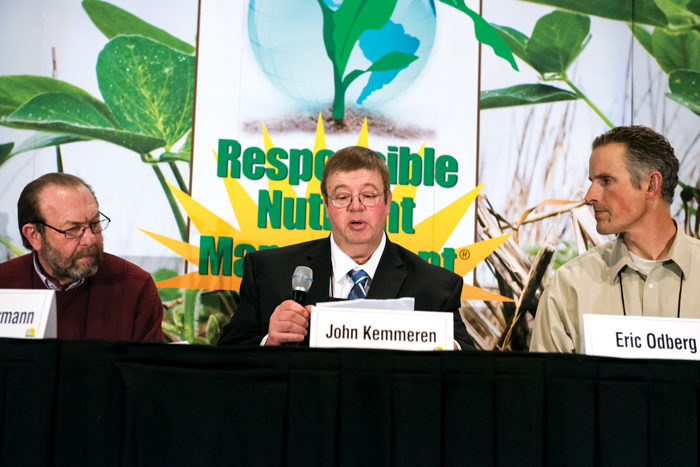No-Till Farmer
Get full access NOW to the most comprehensive, powerful and easy-to-use online resource for no-tillage practices. Just one good idea will pay for your subscription hundreds of times over.

Above photo: TOP TIPS. Left to right, no-tillers Jerry Ackermann, John Kemmeren and Eric Odberg each shared their top five tips for better fertility with the audience at the 24th National No-Tillage Conference in Indianapolis this past January.

Three no-tillers were honored for their responsible approach to their on-farm fertility practices at the 2016 National No-Tillage Conference in Indianapolis earlier this year.
Eric Odberg of Genesee, Idaho, John Kemmeren of Bainbridge, N.Y., and Jerry and Nancy Ackermann of Lakefield, Minn., make up the 8th class of Responsible Nutrient Management Practitioners, sponsored by No-Till Farmer and AgroLiquid.
Below is a synopsis of their advanced fertility programs.
Eric Odberg knows well the challenges of thin soil atop rolling hillsides, which slope as steeply as 45-50% in the Palouse region.
No-tilling 2,200 acres of winter and spring wheat, malt barley, garbanzo beans, canola, millet, sunflowers, quinoa and flax in Genesee, Idaho, the area lacks summer rainfall — and when it does rain or snow, erosion occurs from too much water coming off the hillsides too fast.
Still, his wheat yields are usually above the county average of 85-90 bushels — his recent winter wheat hit 102 bushels per acre.
Keys to Odberg’s farming success in this challenging landscape include using no-till to prevent soil moisture evaporation, using a variety of rotational crops, soil and tissue sampling annually, yield mapping and variable-rate fertilization.
Most of Odberg’s farm drains into the Clearwater River, a salmon-bearing stream he says is…